Configuring products in Odoo 18 is more than just data entry – it’s the foundation of a structured, searchable eCommerce catalog. Each item you configure ensures a seamless shopping experience, from product visibility to documentation-rich product pages. The system offers full integration between the back-end setup and the product website page, ensuring consistency and efficiency. This builds trust and ensures that every product is available with the necessary documentation.
Whether you’re adding physical items, digital downloads, or services, the system features let you configure products with all essential attributes: variants, pricing, availability, media, and attached product documents. These documents remain linked to the product’s back-end form and can be easily published on the frontend when needed.
By managing product content and associated files in the system, you simplify updates and keep your Odoo eCommerce catalog clean, consistent, and customer-friendly. Instead of relying on external links or emails, your customers can download product-related documents directly, streamlining support and reducing repetitive questions.
This guide explains how to create products, upload documentation, and ensure they are fully visible and well-presented on an eCommerce products list, enabling an informative and conversion-ready product experience. It also covers planning inventory, streamlining operations, and developing an effective Odoo eCommerce strategy.
Why
Product Documentation in Odoo eCommerce
Boosts Sales and Trust
For successful sales, it’s crucial to configure products properly and ensure every available product has clear, accessible documentation. When a product is available on your website, customers expect comprehensive information. Incomplete product pages cause hesitation and lost conversions – especially in competitive industries. Learning to create products and manage their documentation directly in Odoo eCommerce improves product list quality and buyer confidence. It also reduces time-to-purchase by eliminating the need for manual clarification and post-sale questions. Whether you create a product online or via import, integrating product documents streamlines workflows and enhances the overall shopping experience.
Here’s why managing product documentation directly in Odoo 18 is a strategic move:
Faster
checkout & fewer questions
Configure products with attached manuals, datasheets, certificates, or size charts directly on Odoo product pages. Customers get instant access to critical information, enhancing product availability perception and reducing hesitation. This transparency streamlines the buyer journey and increases trust at the decision-making moment. The product is available with complete details, so checkout is faster and more confident.
Better Product SEO, Stronger Content Footprint
Odoo 18’s integrated structure enriches eCommerce product pages with its built-in document management features. This boosts Odoo eCommerce optimization by improving search relevance and driving more qualified traffic. Technical documentation, certifications, and manuals enhance your keyword diversity and dwell time. Create products in Odoo eCommerce with built-in documentation and let your catalog rank higher.
Reduced Support Volume with Better Customer Experience
Missing Odoo eCommerce products documentation leads to repetitive pre-sale questions. By offering downloadable files on Odoo product pages, you minimize friction and empower self-service. Buyers can get answers instantly, without waiting for an answer from support. This proactive approach boosts satisfaction and reduces ticket volumes.
Compliance
Made Easy Across All Markets
From CE markings to MSDS files, product compliance in Odoo eCommerce is simplified. Centralized Odoo product management ensures consistent access to regulatory documents across channels. Meet industry and regional standards right from the product page. Odoo 18 helps you stay audit-ready without relying on extra tools or manual processes.
Meet
Buyer Expectations with Proper Documentation
Procurement teams need technical specs, safety sheets, and certificates before buying. With Odoo eCommerce documentation attached in the system, you project professionalism and readiness, accelerating deal cycles and building buyer confidence. B2B buyers often compare multiple vendors – clear documentation gives you the edge. When you configure products properly in Odoo eCommerce, you reduce back-and-forth and win trust faster.
Aligned
Internal Teams with One Shared Document Source
Sales, logistics, and customer service rely on up-to-date centralized product documentation. Storing files in the product catalog eliminates duplication and confusion. When you create products in Odoo eCommerce, all teams work from a single source of truth. No more outdated attachments or mismatched specs in emails.
No
Extra Tools, Documentation Built Into the Product Workflow
Upload, manage, and version files directly when you create products online in Odoo 18. The Odoo eCommerce documentation layer is embedded in your existing processes – no plugins, no integrations, just clarity. This native flow saves time and prevents errors. Product documentation becomes part of your eCommerce products list – not an afterthought.
Inventory and Sales Planning in Odoo eCommerce
Effective Odoo eCommerce planning turns your online store into a sales powerhouse. With Odoo 18’s robust tools, you can streamline inventory management, forecast sales, and plan product launches with precision. Real-time data synchronizes stock levels across your Odoo eCommerce platform, preventing overselling and ensuring product availability. Built-in analytics help you predict demand, optimize pricing, and schedule promotions, while centralized dashboards keep your team aligned. Whether you’re scaling a small shop or managing a global catalog, smart planning in Odoo eCommerce saves time and boosts profit. With the appropriate system setup, your eCommerce operations in Odoo 18 can run smoothly from inventory updates to checkout. Let’s walk through the essential setup steps together.
- To use Odoo eCommerce features, make sure the Sales, Inventory and Website modules are activated.
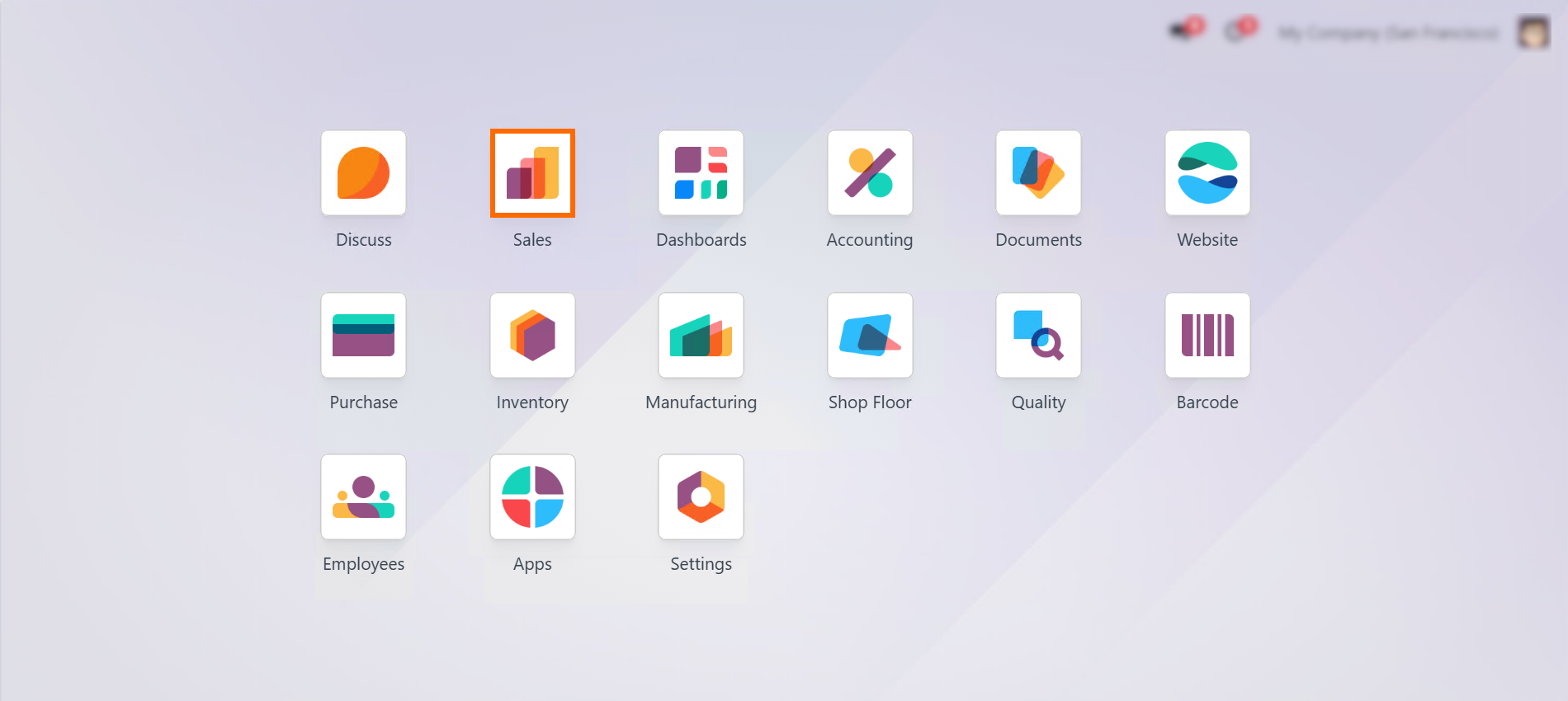
Transparent
Product Pages with Odoo eCommerce
To successfully sell online, your system must be both transparent and automated. Every configured product should not only be visible in your eCommerce products list, but also come with clear commercial offers, technical specifications, and usage instructions. When a product is available on your website for product browsing, buyers expect all relevant files and attributes to be in place. That’s why businesses that create products online in Odoo eCommerce must go beyond basic setup – it’s essential to configure products with complete supporting documentation. By doing so, each available product builds trust and simplifies the decision-making process. Whether you create a product online from scratch or import them in bulk, Odoo 18 makes it easy to centralize and publish key documents directly on the product page.
- Go to the Inventory Module and choose an existing product or create a new one to ensure continuous updates and accurate information.
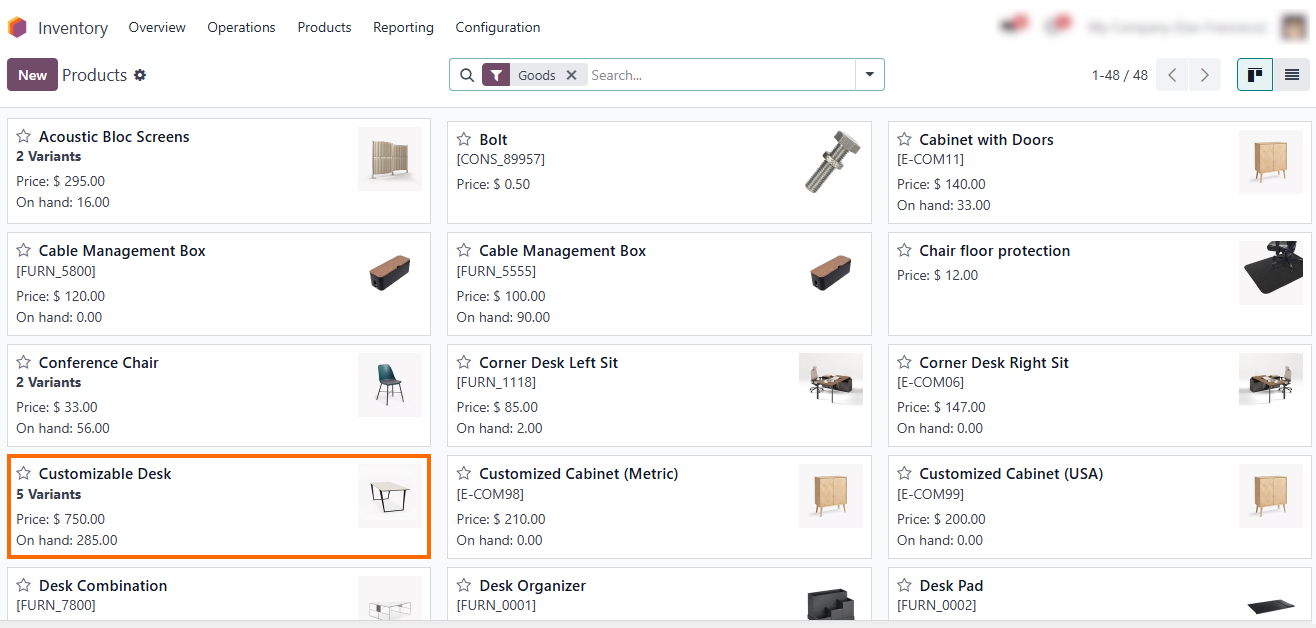
- Click
“Add Document” to include clear commercial offers, technical specifications,
and usage guides, thereby enhancing transparency.

- Leverage Odoo eCommerce automation tools to streamline product updates and ensure consistency across your catalog.
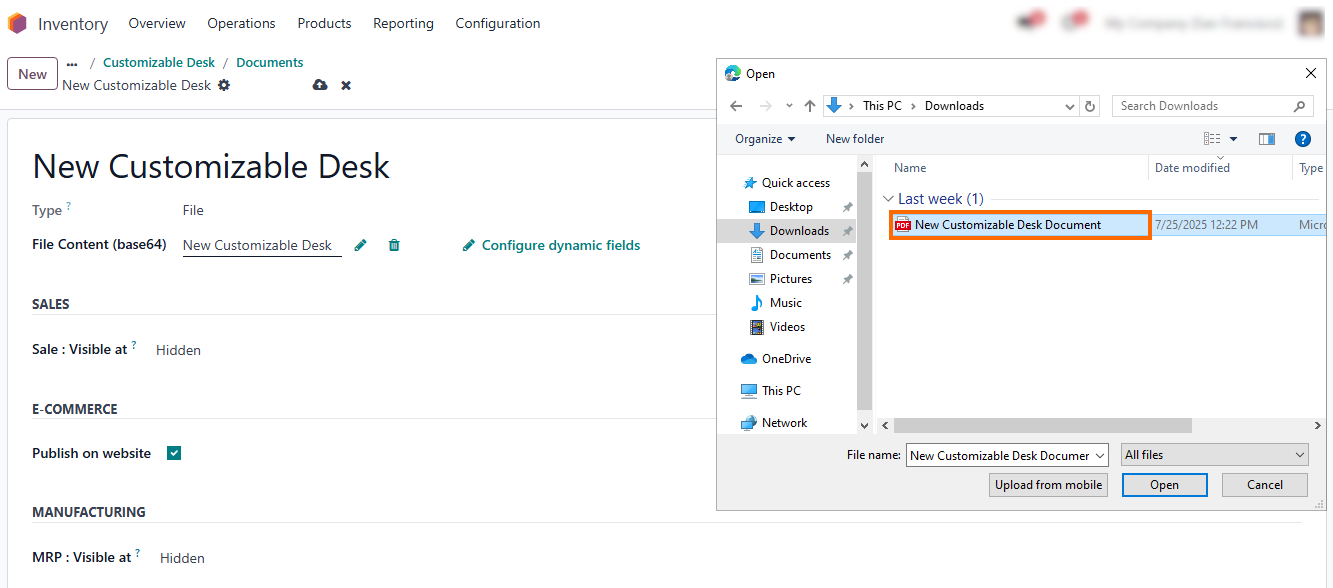
All attached product documentation will be displayed in the updated Documents window. Configure products documentation as needed to keep your catalog
accurate and up to date.
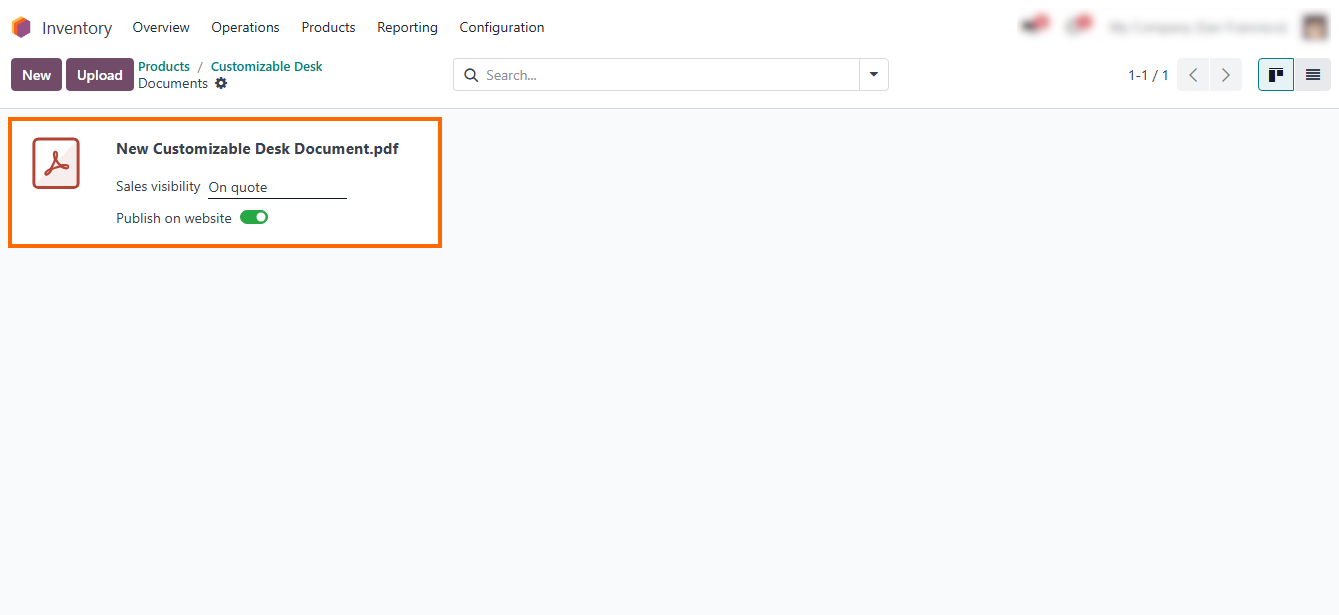
Creating
the New Quotation in Odoo eCommerce
Once you configure the product correctly and ensure that it includes essential documentation, you are ready to move from catalog setup to sales engagement. When a product is available and visible on the website for product browsing, the next logical action is to generate a personalized quotation. Whether you create a product online from scratch or manage an existing item, Odoo 18 makes it easy to streamline this process. Thanks to full integration between the Inventory module and Odoo eCommerce, you can generate professional offers in just a few clicks – all while maintaining transparency, accuracy, and speed. Learn how to create a new quotation from a configured product and fully leverage product configuration.
- Click "New" to create a new quotation, as shown in the screenshot – this is the first step to fast and accurate customer service.

- After that, you need to select the appropriate product, specify the quantity, and confirm the action by clicking "Confirm".
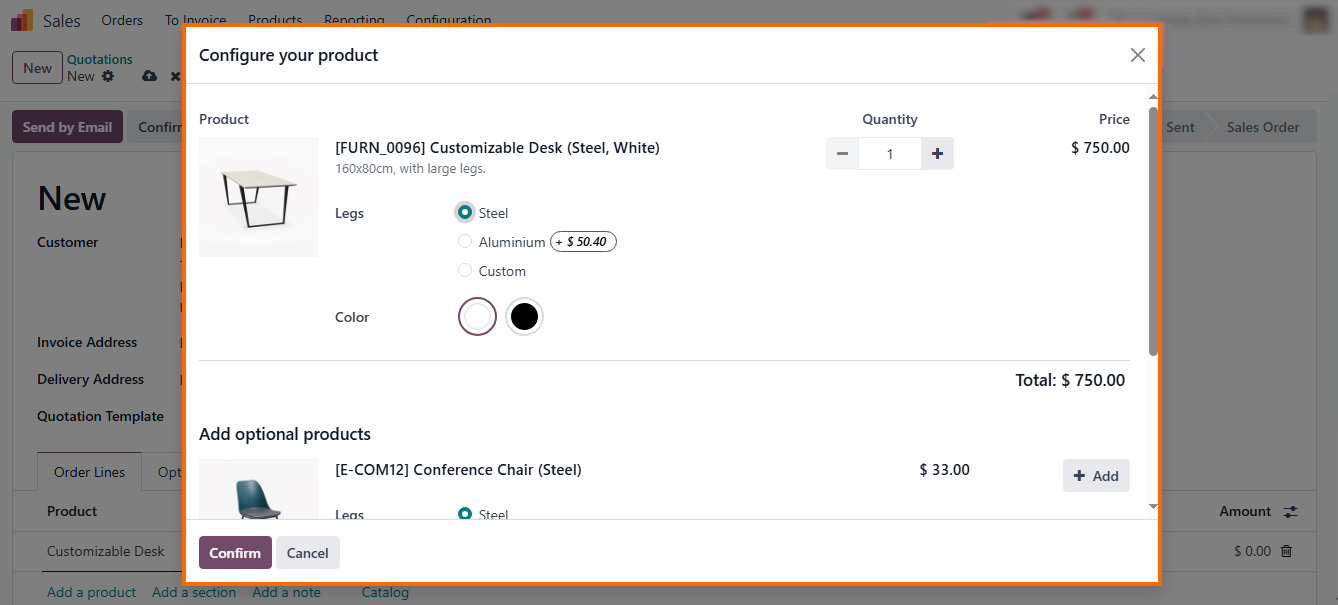
- Click "Preview" to view the final offer before sending it to the customer – ensure every detail is accurate, professional, and ready to convert.
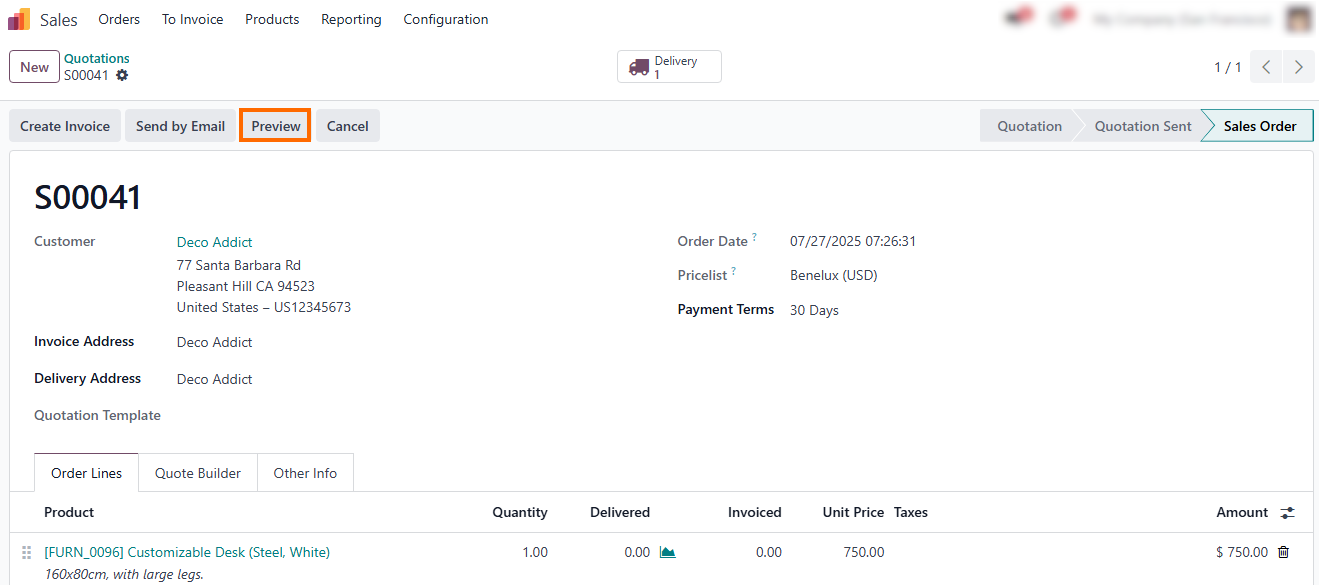
- At the preview stage, the customer can view or download the attached product documentation.
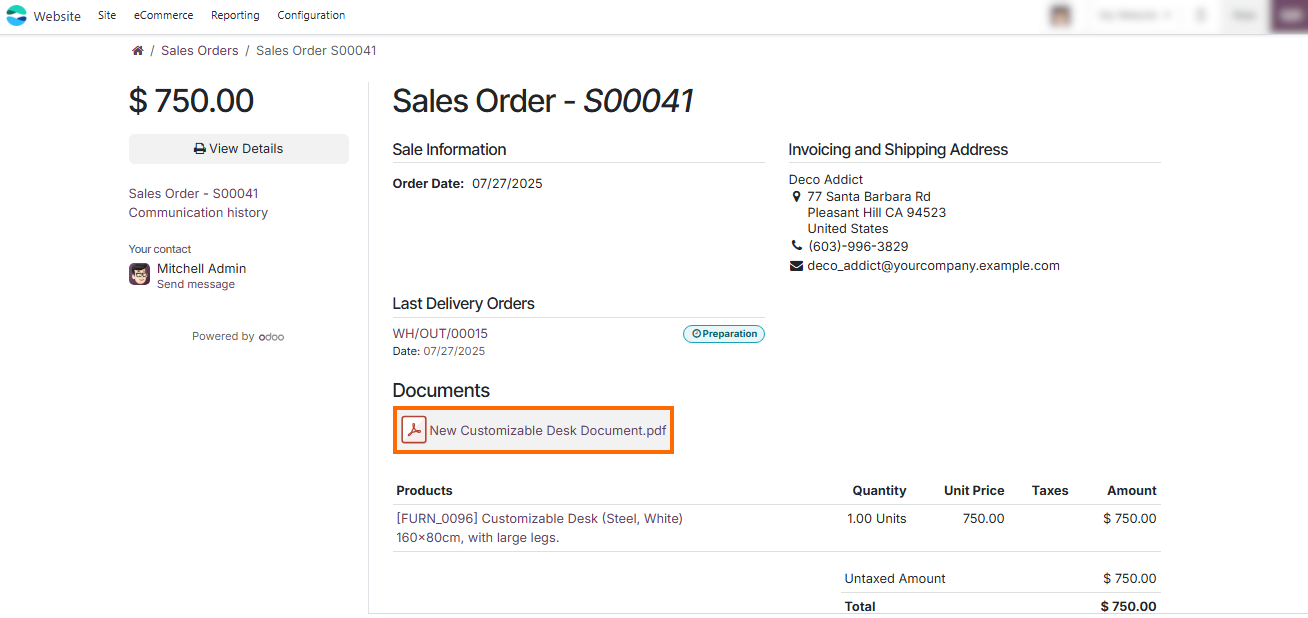
- As a result, all attached documents will be automatically displayed in the quotation, based on the previous configuration in the available product form.
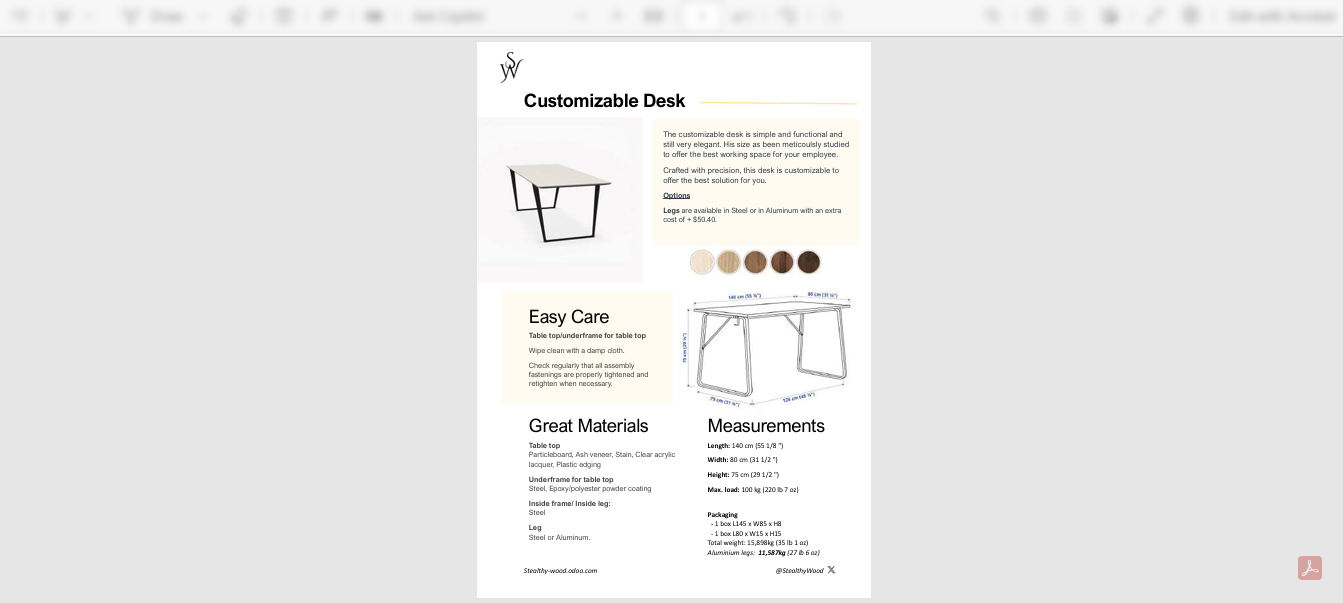
Optimizing Product Pages for Your Odoo eCommerce Website
Once you create products and configure products in Odoo 18, it’s time to present them
professionally on your website for product
discovery. Odoo eCommerce makes it easy
to create a product online and
instantly display it in your eCommerce
products list with full control over images, descriptions,
documentation, and SEO settings. Every available
product is automatically synced with the front end, ensuring that when a
product is available in inventory, it’s
also ready to sell online. Thanks to the seamless connection between the
product form and the website builder, your product pages remain up-to-date and
conversion-ready. With product availability, documentation, and media all
connected, buyers get a complete, transparent experience, leading to better
decisions and faster checkouts.
- Note that when customers view a product on your Odoo eCommerce store, they can immediately access the documentation, as we previously enabled its publication on the website for product visibility.
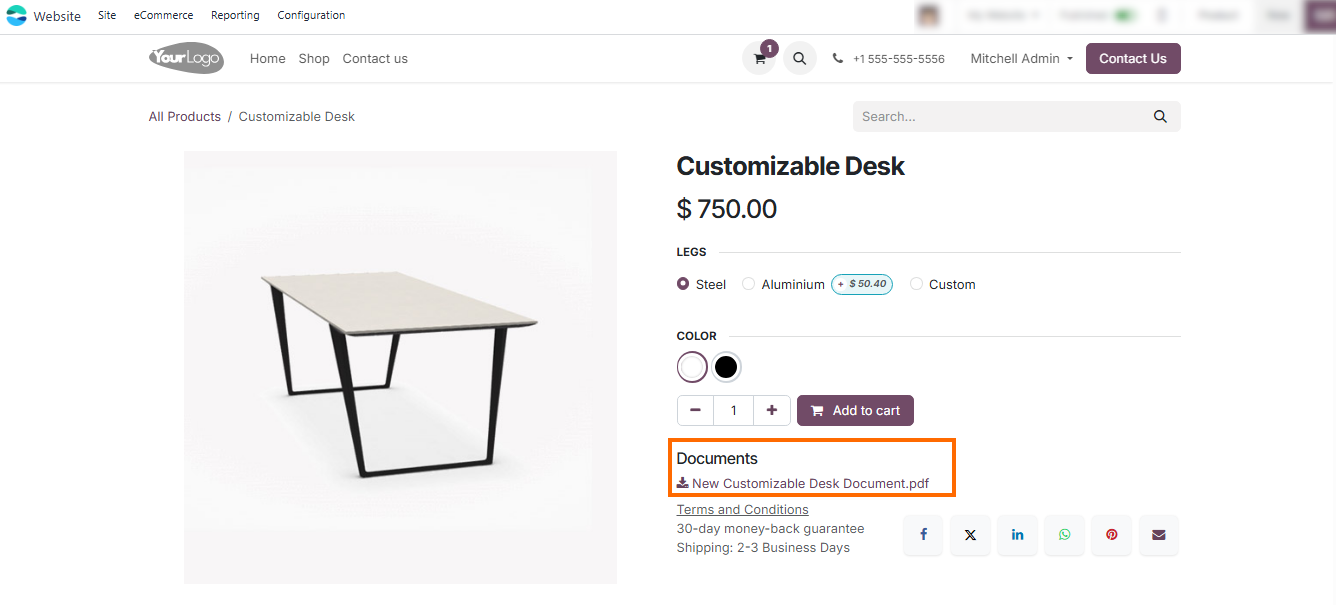
If you understand that the document is intended for internal use only, adjust and save the settings, and the system will remove it from public access.
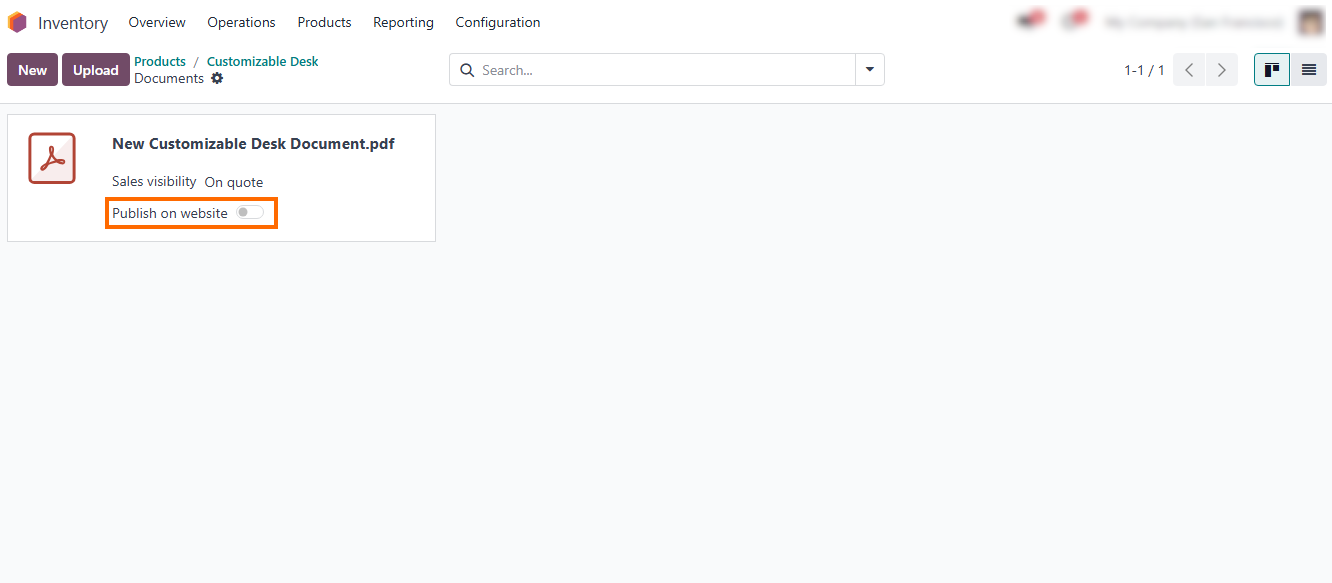
Measuring Conversion
Impact in Odoo eCommerce
In Odoo eCommerce, configuring products with comprehensive documentation drives remarkable conversion rates, turning browsers into buyers. When you create a product online, attaching manuals, technical specs, or size charts ensures every available product is fully transparent. By publishing these files on the website for product visibility, businesses empower customers with instant answers, reducing hesitation and accelerating checkouts. For example, an Odoo eCommerce store optimized its eCommerce products list with clear documentation and saw up to 60% higher conversion rates compared to pages where the product is available without supporting files. This transparency builds trust and maximizes sales, making documentation essential when you configure products or create products in Odoo 18.
-
Configure
products with actual documentation to increase customer
confidence and boost conversion rates in Odoo eCommerce.
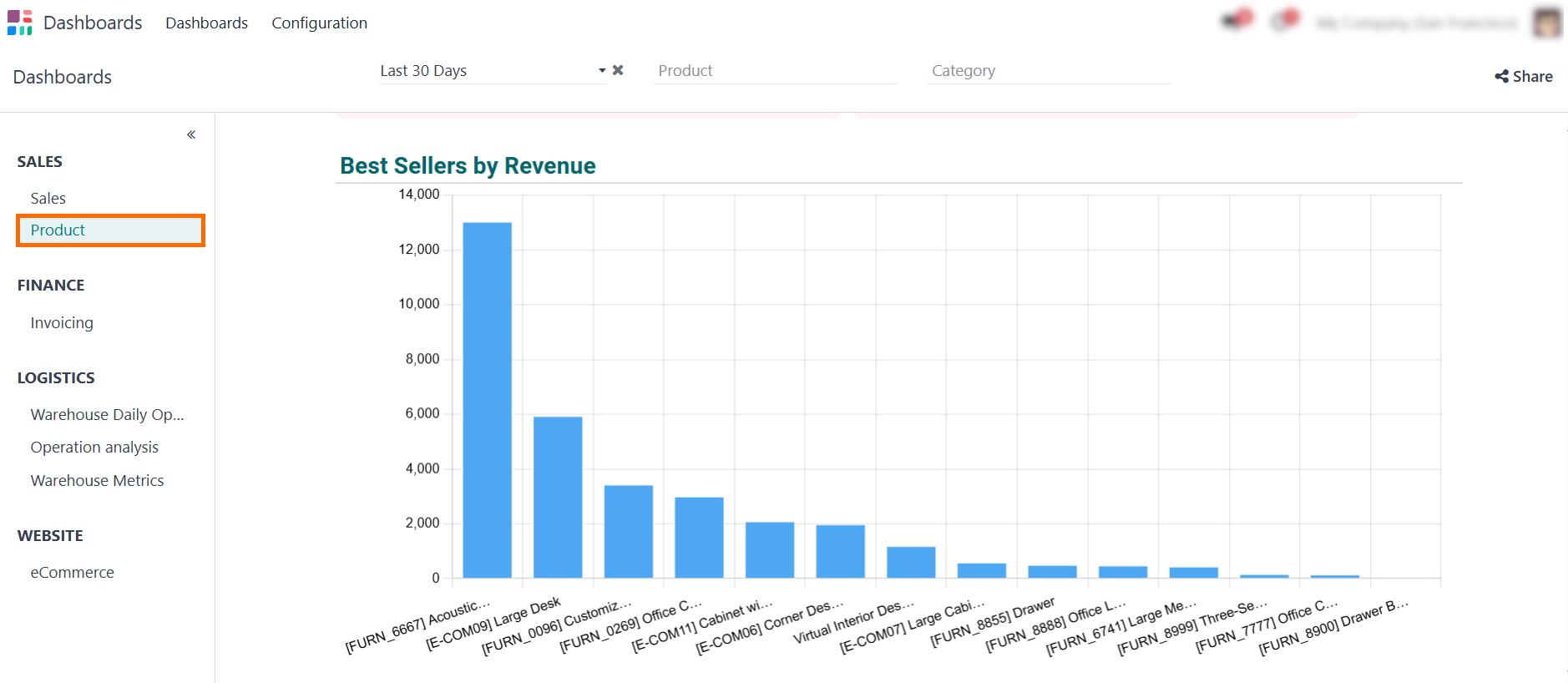
Click Share to instantly distribute internal reports or product feedback to your team. This simple step keeps everyone aligned and helps track which available product pages generate the most engagement.
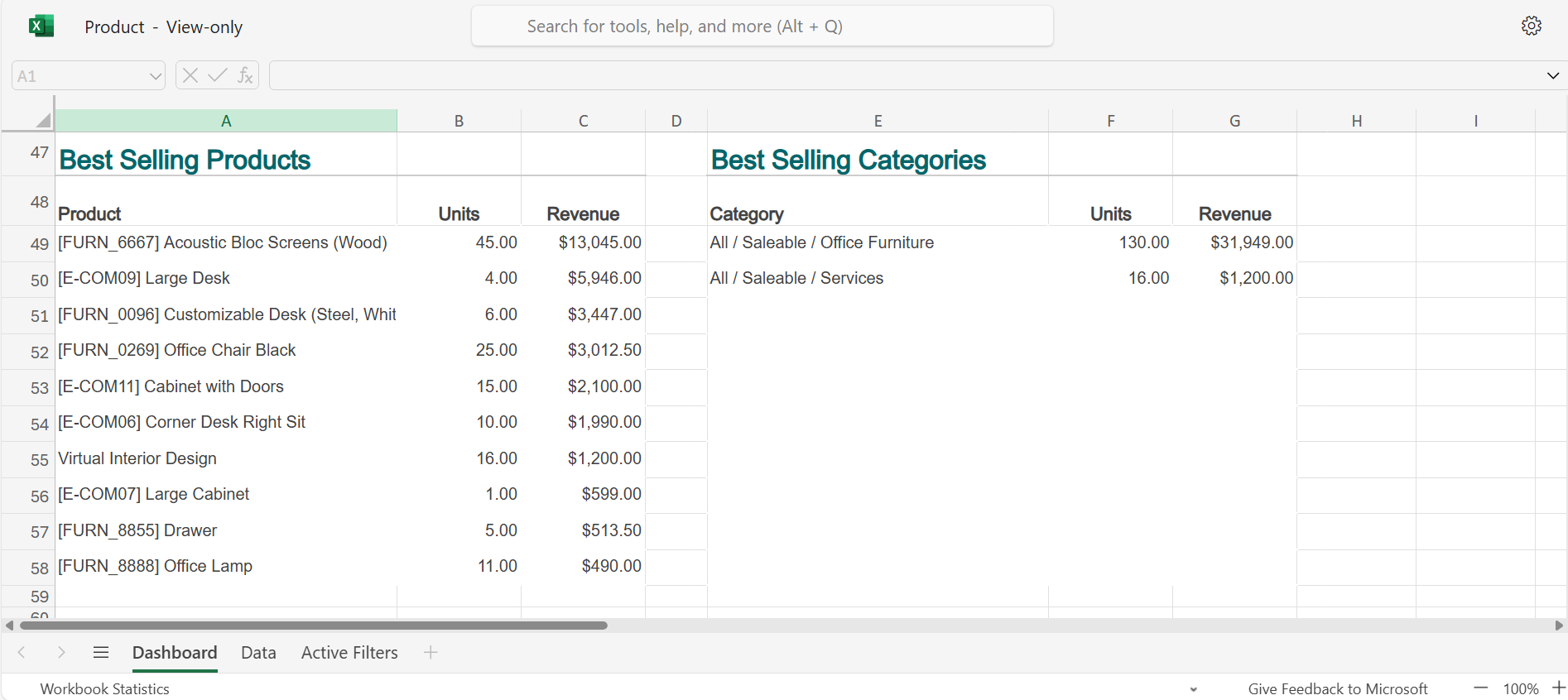
From Configure Products to Results: Track and Optimize Performance
After you configure products and ensure they are well-documented, the next step is to measure impact. Odoo eCommerce offers built-in marketing analytics that go beyond simple traffic stats – allowing you to track product availability signals, document downloads, time on website for product pages, and even conversions from your eCommerce products list. Users can easily identify which available product draws the most attention, which listings underperform, and how buyers engage when you create a product online, these metrics support informed decisions: whether to adjust descriptions, improve images, add supporting files, or revise categorization. So, every time you create products in Odoo eCommerce, you are not just filling out forms – you are building a measurable customer journey.
- Activate analytics integration by going to "Website" configurations, and enabling tools like "Google Analytics" and Odoo 18’s native tracking.
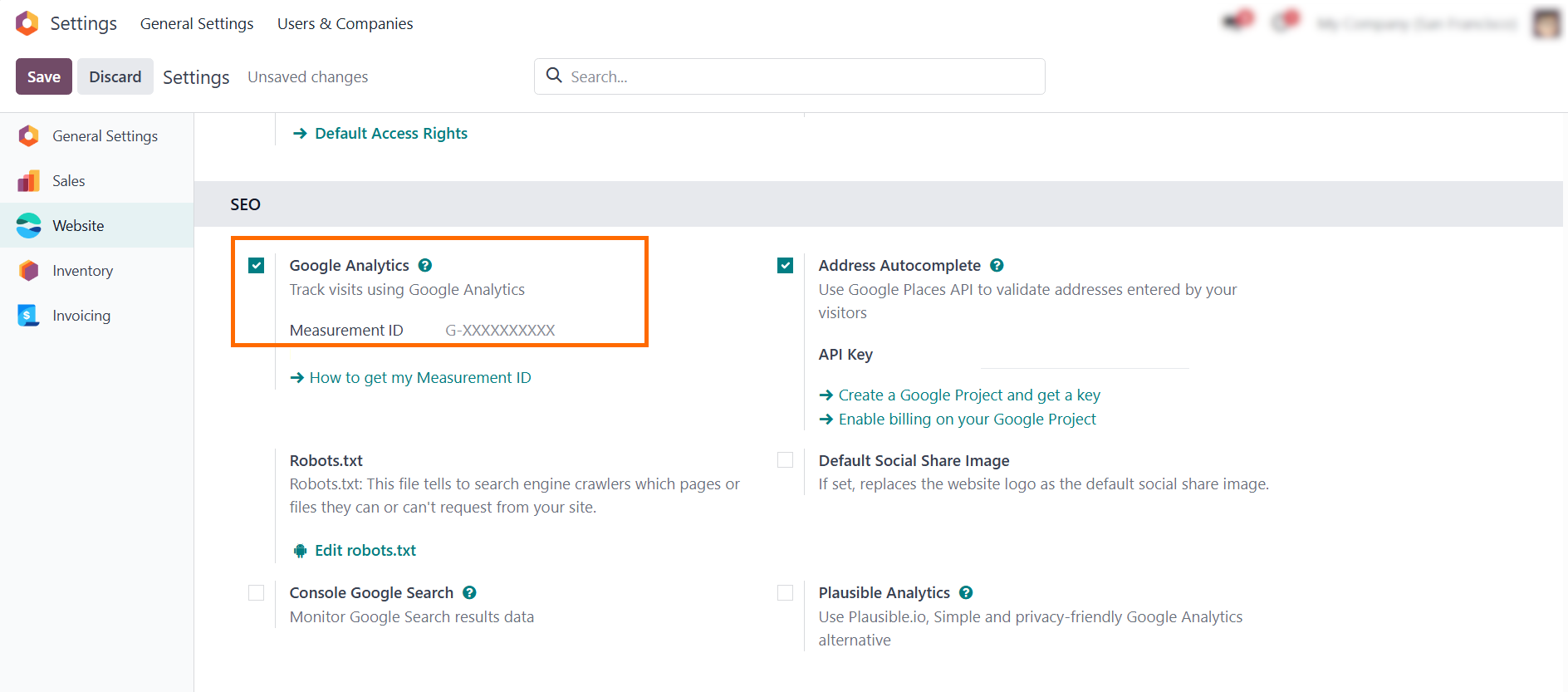
Stay tuned for more insights on using Odoo eCommerce analytics features to track product engagement, analyze trends, and optimize your online store. Subscribe to KoderShop for the latest tips and tutorials.

Key Integrations for a Seamless Odoo eCommerce Experience
To optimize your Odoo eCommerce operations, leverage seamless integrations with key modules like CRM, Accounting, and Manufacturing. These connections allow users to effortlessly configure products between your back-end systems and the online store, ensuring real-time inventory updates and accurate product listings. Enable these features by navigating to the Apps section in the main menu and installing the necessary applications. CRM automates customer interactions, tracks inquiries, and notifies about restocks. Accounting generates accurate tax invoices. Manufacturing manages material consumption. Barcode scanning simplifies product setup, while photo stock integration enhances store visuals. These interconnected systems work together to minimize manual tasks, reduce errors, and deliver a cohesive, automated shopping experience that keeps your operations running smoothly while maintaining customer satisfaction.
- Activate Odoo apps to streamline your workflows and save time on daily tasks, as shown in the screenshot.
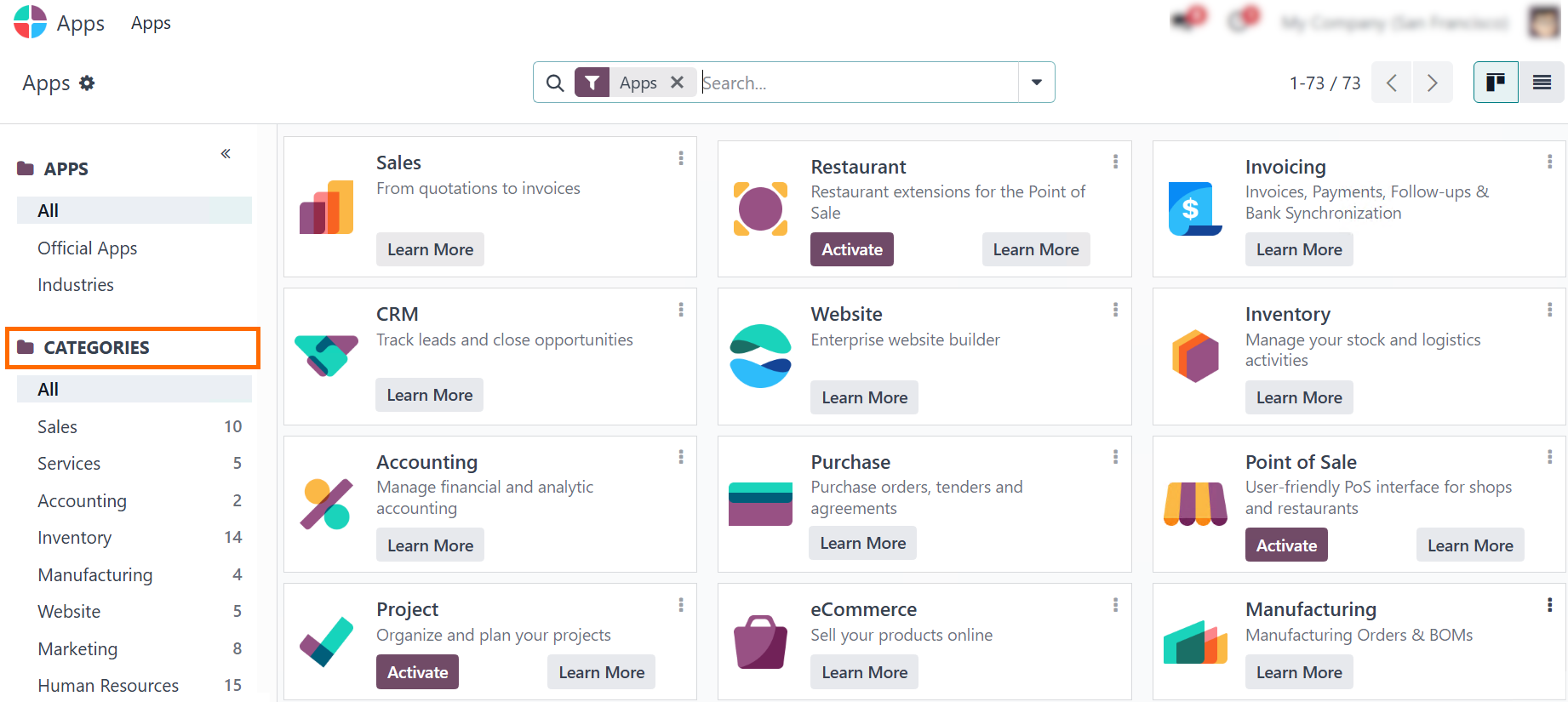
Pro tip: Integrate the Documents module to digitize and store every product spec, invoice, or customer agreement – turning your Odoo eCommerce into a truly paperless engine.
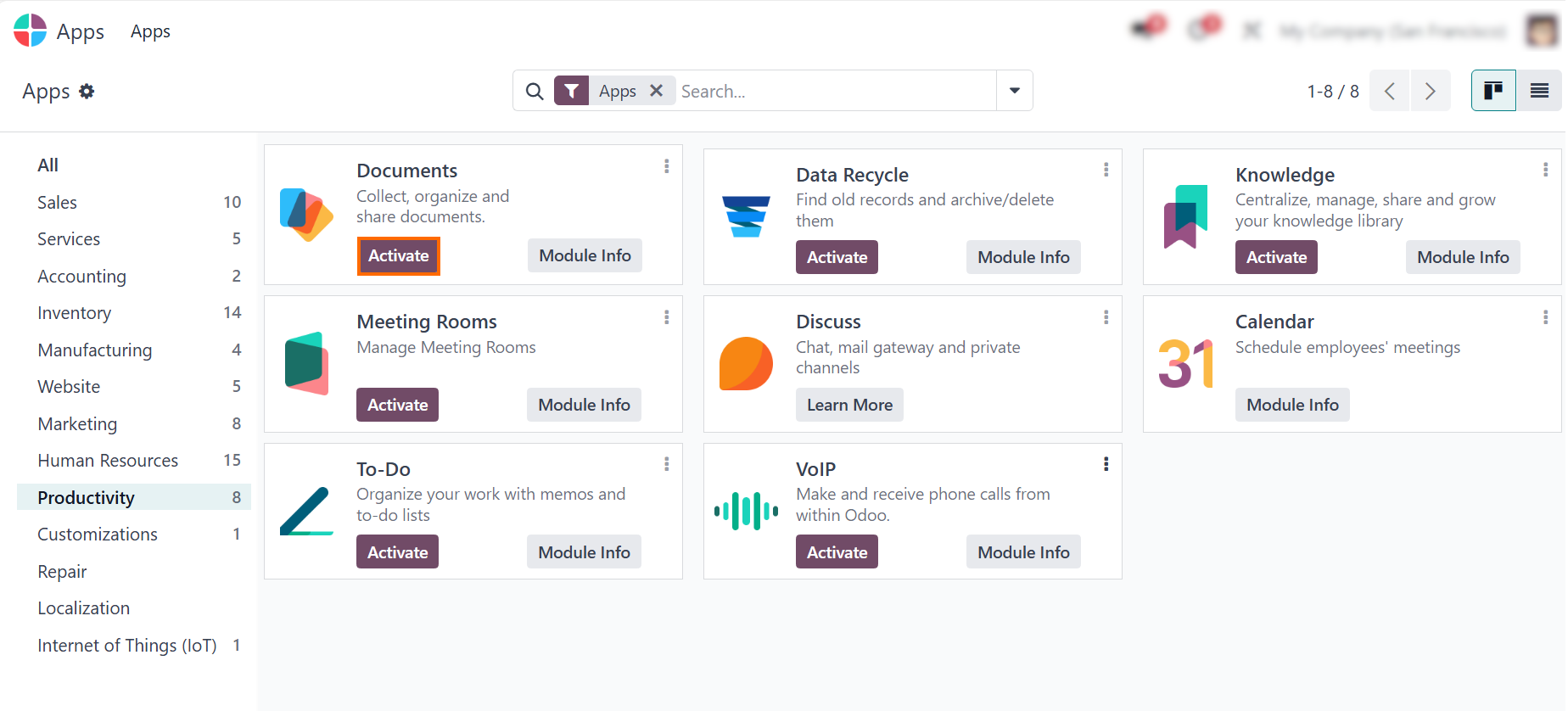
This interconnected system eliminates duplication, minimizes errors, and creates a centralized source of information.
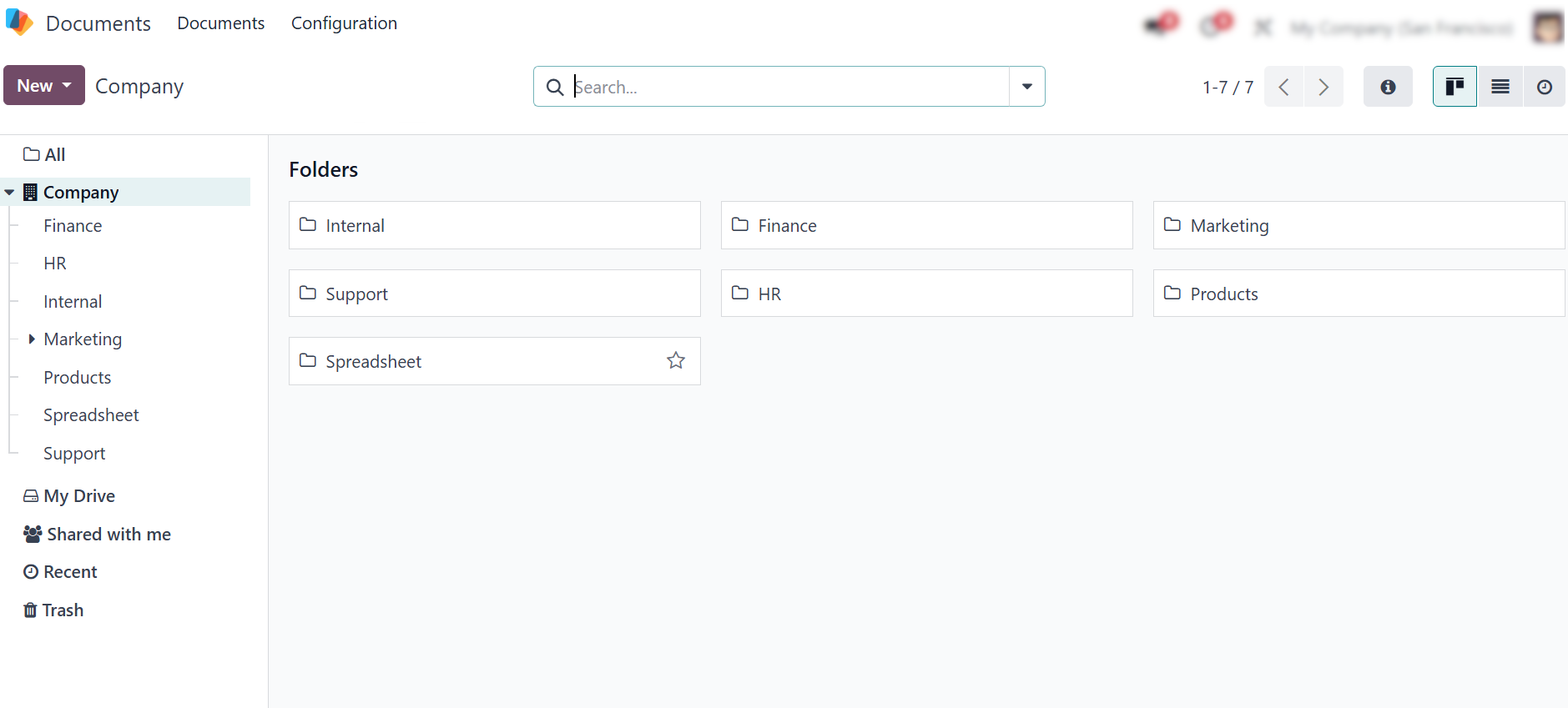
Scaling Your Odoo eCommerce Catalog: Real-World Success Stories
As your online store expands, maintaining a structured and scalable eCommerce products list becomes critical for long-term success. In Odoo eCommerce, the ability to efficiently create products, manage variants, and configure products in bulk allows businesses to keep pace with growth while delivering consistent customer experiences. Centralizing all technical files and marketing documentation on the website for product display ensures that every available product is not only discoverable but also conversion-ready. With the system’s flexible import and export features and reusable templates, teams can scale their eCommerce catalog tenfold without losing control over quality or branding. When each product is available with the right specs, sizing details, and visuals, your store becomes more trustworthy, search-friendly, and profitable. Next, let’s review a few real-world mini cases to better illustrate this scaling in action.
Bakery Optimized
Launches
A small bakery decided to create products directly in Odoo Sales and configure products with detailed ingredient information. The team uploaded 15 types of baked goods and attached PDF sheets with ingredients. These were published on the website for product visibility. As a result, available product data became accessible to customers instantly. Sales rose by 20% in the first month, and non-targeted customer inquiries decreased by 15% due to well-documented listings.
Handmade Crafts
Strengthened Their Position
A craft business used Odoo 18 to create products with high-resolution images and photo-based step-by-step production notes. All 10 unique handmade items were visible in the eCommerce products list, improving catalog structure and customer trust. After launching the website for product sales, traffic grew by 25% in one week, and the team reported a notable drop in customer hesitations.
Cleaning Products
Standardized Their Process
A sustainable cleaning brand added 20 eco-friendly products in Odoo 18 with downloadable PDF safety documentation. Each available product was configured with regulatory information and usage tips. After launching on their Odoo eCommerce site, support time dropped by 30%, while sales rose by 15%.
Artisan Food Producer Launched Clean-Label Products
A family-owned food company producing organic sauces and spreads adopted Odoo 18 to configure products with detailed menu, nutritional values, and expiry tracking. They used Odoo eCommerce to create a product online and instantly publish it to their eCommerce products list. With the product available in real-time across all channels, customer trust and purchase confidence grew. Within weeks, they saw a 22% increase in add-to-cart rates and reduced product info inquiries by half.
Electronics Retailer
Enabled Scalable Growth
An electronics company managing hundreds of SKUs started using Odoo 18 to create products in bulk and maintain up-to-date tech specifications. By launching their website for product browsing and integrating the Odoo eCommerce back-end, they reduced catalog management time by 40%. As a result, product updates go live faster, and customers always see the available product in stock with real-time status.
Conclusion
To be successful in modern digital sales, it’s not enough to just list items – businesses need to create products online with care, structure, and documentation. When each product is available with complete technical details, visuals, and downloadable documents and the eCommerce product list becomes a high-performing sales tool. Using Odoo 18, you can configure products with all essential attributes and publish them directly to your website for product visibility, ensuring that every available product meets customer expectations instantly.
The ability to create products, attach documentation, and maintain consistency across the catalog streamlines operations and drives confidence. From the moment a product is available online to the final checkout, customers enjoy transparency and fast access to critical information. With Odoo eCommerce, you don’t need plugins or third-party tools — you get a native, end-to-end workflow that simplifies how you configure products and manage documentation.
Whether you manage a small shop or a large catalog, the strategy is the same: create a product online, enrich it with product documentation, and keep your eCommerce products list optimized. This approach ensures that every available product tells a clear story, builds trust, and converts better. As a result, when your product is available and well-configured, your store performs better – and Odoo eCommerce makes that possible.
Ready to streamline your product catalog and boost sales with confidence? Get started with Odoo 18 today – contact us for expert implementation support.